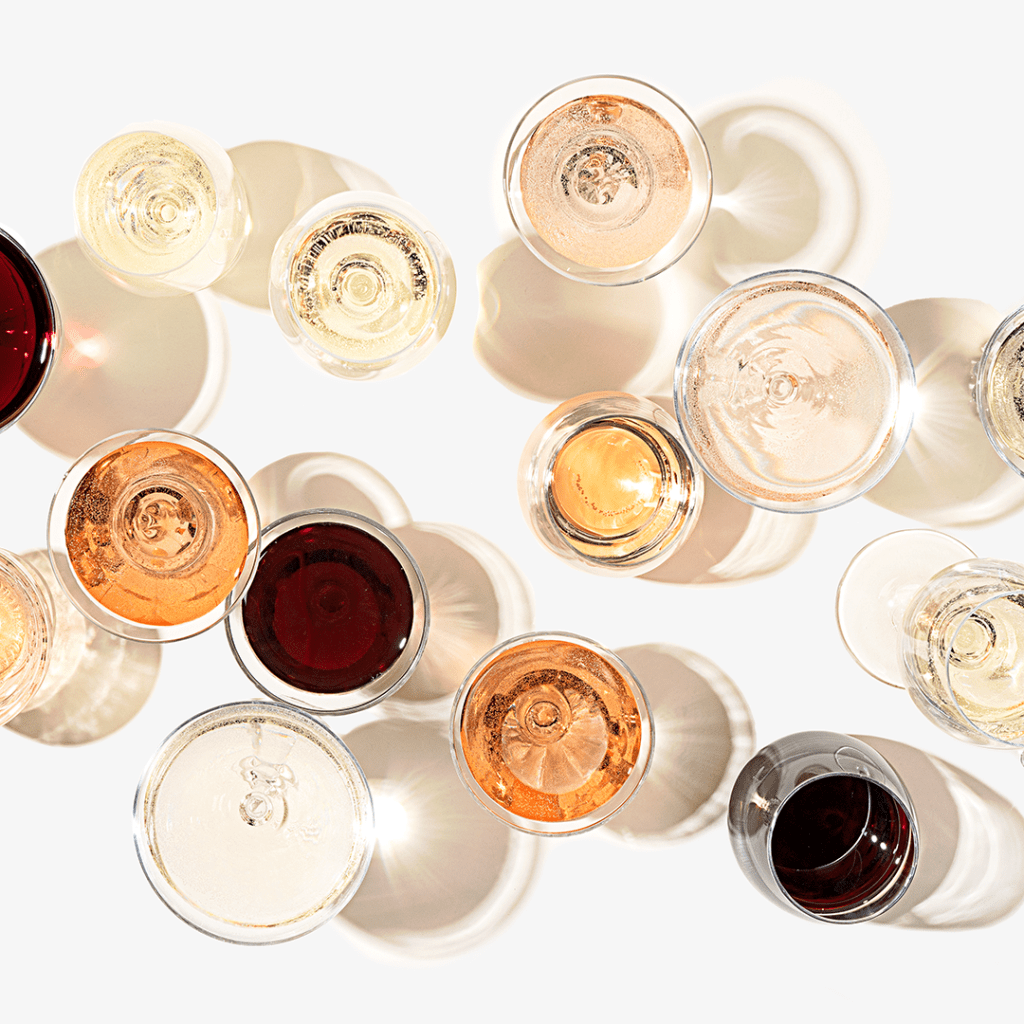Your guide to wines’ sweetness scale—and how to choose varieties you’ll love

While a wine’s sweetness depends on the type of grapes used and when they’re harvested, just as important is how long the grapes are fermented. That’s the process that converts sugars in fruit into alcohol. The climate in which the grapes are grown and how long a bottle is aged also factors into whether the finished product is sweet, dry, or somewhere in between.
Dry Wines
Dry wines contain very little (if any) residual sugar once fermentation is complete. The drier a wine, the fewer its residual sugars. Dry wines have a crisper, more mineral mouthfeel and not as many nectary or fruity notes.
Off-Dry/Semi-Sweet Wines
Off-dry and semi-sweet are basically interchangeable terms—they represent the halfway mark between dry and sweet. These wines tend to have a small amount of residual sugar for a mildly sweet flavor, or they may have no residual sugars at all but contain fruitier notes that lend a hint of sweetness.
Sweet Wines
Sweet wines contain the most residual sugar, which translates to a stronger presence of honeyed notes and syrupy mouthfeel on the palate.
Here’s where some popular varietals land* on the sweetness scale:
| Very Dry | Dry | Off-Dry/ Semi-Sweet | Sweet | Very Sweet |
| Sauvignon Blanc Muscadet Sangiovese Tempranillo | Chenin Blanc Pinot Grigio Chardonnay Grenache Pinot Noir Syrah Cava Brut Prosecco Cinsault Cabernet Sauvignon Tempranillo Greco Carignan | Riesling Moscato Merlot Pinot Noir Malbec Zinfandel Sangiovese | Lambrusco Port White Zinfandel White Merlot | Ice Wine Tawny Port Pink Moscato |
*Note: The region where a grape is grown can play a part in the wine’s sweetness due to differences in soil, terrain, and climate, so not all regional varieties will fit perfectly on this scale.

What is sweet wine?
| Sweet wine refers to wines that have fruity or nutty flavors, typically caused by residual sugars left after fermentation. Popular sweet wines include port, moscato, white zinfandel, sauternes, and some riesling and lambrusco wines. They’re great for serving alongside brunch and dessert, and are especially well-suited to storing because the residual sugar acts as a natural preservative. Sweet wines typically have 35 to 120 grams of residual sugar, while very sweet dessert wines can have up to 220 grams of sugar. There are also semi-sweet wines, known as off-dry, which contain 10 to 35 grams of sugar and have a lightly sweet flavor. |
Try wine delivery near you with Misfits Market

Comments (3)
I can not wait to buy your wines
We can’t wait either, Ava! We’re looking forward to hearing your thoughts on our wine selection. ????????????
Thank you!